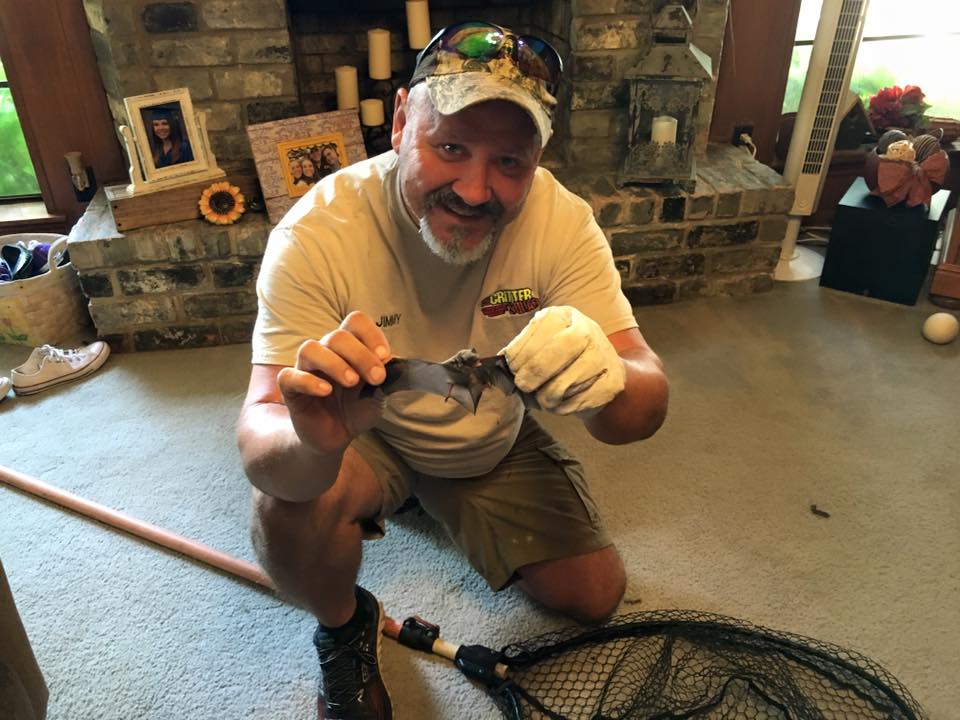How large of an opening do bats to get inside a home?
If there is an opening or crack the size of a match book or larger, you can be sure a bat can fit inside as well.

Bat Removal Services
[toc]
Overview Of Bats
Bats are the only flying mammals. Their front limbs have evolved over the years, they have elongated fingers and a wing membrane stretched between them. The bat is the second largest order of mammals with over 1200 species.
Bats of Texas
There are 33 species of bats documented in the state of Texas. The species found belonged to four families of bats.
- Family mormoopidae example Ghost-faced bat – Mormoops megalophlla
- Family Phyllostomatidae example Hairy-legged Vampire – Diphylla ecaudata
- Family Vespertilionidae example Western Small-footed Myotis – Myotis ciliolabrum
- Family Molossidae example Big Free-tailed Bat- Nyctinomops macrotis
Damage
Most of the damage that a structure will sustain is going to stem from the bat guano and urine that they are going to excrete 20 or more times a day. These substances are corrosive to the surfaces inside a structure like wood, metal, drywall, and insulation. Further damage is going to come from the cleaning up process that is going to be extensive in order to fix everything they did. Cleaning up a bat infestation may require the removal of insulation, drywall, wood beams due to the smell and corrosion they experienced from their droppings. Bats are also going to bring other dangers that you are not even going to realize is there until it has made you sick.
Dangers
One of the most prevalent diseases that bats will transmit, aside from rabies, is histoplasmosis. This is a fungal infection that is caused by inhaling the spores of the Histoplasma capsulatum fungus. This fungus is present in the bat guano that they leave behind. When people enter the areas containing guano, they may stir up the spores and make them airborne and breathable. When people are exposed to these spores they can end up with symptoms that range in severity from a bad flu to feeling like tuberculosis. This infection can be mild and healthy people will be able to fight it off themselves and more severe cases are going to require antifungal medications and hospitalization.
Diseases
Bats also carry a wide range of different parasites that may spread throughout a home. Fleas, ticks, mites, and bat bugs are all possible parasites that can be present in a colony of bats. Even after the bats have been removed, they may have left behind these parasites that can afflict humans and pets alike with a wide range of different diseases. When these parasites suck on the blood of bats, they contract the diseases they have. When they bite humans and pets, they can spread these diseases quite easily. It may be necessary to treat the home or structure for these parasites after the bats are long gone.
Rabies
Bats are usually carriers of the rabies virus. The following are the symptoms for rabies in bats: Flying in the daytime, spastic paralysis, breathing difficulties, dehydration, cloudy eyes, the presence of dirt in the bat’s mouth, mucus on the nostrils, isolation from the colony, abnormal sounds made by the bat among others. Bats transmit this illness to humans when they bite.
White-nose Syndrome
In eastern North America, White-nose syndrome has caused unmatched deaths of hibernating bats. There has been a great challenge in managing and researching the syndrome as it continues to spread. This has evoked the state and federal wildlife agencies to conduct a combined coordinated effort to try to manage the white-nose syndrome and to conserve the bats.
Although bats serve an important natural service by keeping the insect populations in check, they are not the kind of animals that a person wants living in close proximity to their home. The cleanup and removal process of bats needs to be handled by a professional because they are going to have the latest technology and the information to help you get through this process as easy as possible.
Reproduction
Bats mate in winter and delay fertilization till spring for the fetus to start developing. There are species such as Mexican free-tailed bat that mate and give birth in early summer or spring. The gestation period for bats is 40 day. They give birth to live young ones and breastfeed them like other mammals. Most species of bats produce only one pup in a year while others produce two or four and are taken care of in maternal colonies. Maternal colonies a group females bats who come together to bear and raise the young pups together. The pups grow fast and are ready to feed by themselves and fly by late summer.
Diet
Most bats about feed on insects. There are also fruit-eating bats, nectar-feeding bats, fish-eating bats, carnivorous bats that prey on lizards, frogs, birds, and small mammals. The most famous and scary group of bat are the blood-sucking vampire bats of South America.
Habitat
Bats live almost everywhere, including under tree barks, in caves, crevices along bridges, palm fronds, hollow trees. They are creatures of habit and will return to the same roost for long periods of time, sometimes even for a whole lifetime. Bats roost areas such as on roof ceiling, abandoned houses.
Benefits of Bats
- Bats that feed on insects are beneficial to man. A colony of bats can devour tons of insects thus making bats natural pest control. Most insects damage crops, cause diseases to livestock and man and are a huge nuisance.
- Nectar-feeding bats are important as they help plants in cross-pollination, especially in rainforests.
- Fruit feeding bats are important because they help plants to disperse the fruit’s seeds. Over 300 fruit species depend on bats for seed dispersal.
- They are food for owls, raccoons, opossums, falcons, hawks among other carnivores and thus supplement the energy cycle.
- Bats fecal matter known as guano, is used as fertilizer
Responding To A Bat Bite
When a bat bites you, it’s important to immediately seek medical attention. The bat should also be captured and evaluated for rabies to determine the course of action and medication. You should thoroughly wash the wound with soap and water. Then contact a designated respondent who should advocate for a rabies vaccination especially if the bat has symptoms of rabies. Capture the bat while following district procedure and keep it in captivity until animal control responded. Determine whether any other individual came into contact with the bat and get close contact to facilitate medication and vaccination in case the bat is found to have rabies. The information should be confidential. Report the incident to IPM coordinator to notify animal control. The local and regional health department should be consulted about incidents of potential rabies.
Finding A Bat
Don’t try to capture the bat. Bats are good in flight and require experienced training. You may also injure the bat or break its wings. Notify official. and evacuate the area, and secure the doors so that the bat doesn’t escape if the bat is in an enclosure. If the bat is outside in the open, keep people away so as not to scare the bat to fly away. Identify the people who came into contact with the bat for further diagnosis.
Popular Bat Topics
How To Build a Bat House
Bat Prevention Tips
Bat Repellent
Big Brown Bat
Damage Bats Cause
Bat Exclusion Methods
Do Bats Migrate
Little Brown Bat
Bats in Barrel Tile Roof
How to Kill a Bat
Advice Emails
Do Bats Hibernate?
How Many Bugs per Night Do Bats Eat
Inspection – Find Bat Entry
Are Bats Blind?
Mexican Free Tail Bat
Catch a Bat Inside House
Bats in a Chimney
Can Bats Walk On The Ground
Attic Cleanup
Bat Maternity Season
About Me
About Bat Bugs
Histoplasmosis and Bats
Bats and Rabies
What should I do with a bat after I catch it in my house?
Bat Trapping
Bat Poison
Bat Extermination
Will a bright light or high pitch sound deterrent machine work on bats?
Bat Feces Photos
Bat Photographs
Bat Diseases
Do Bats Avoid Lights
Bat calendar

